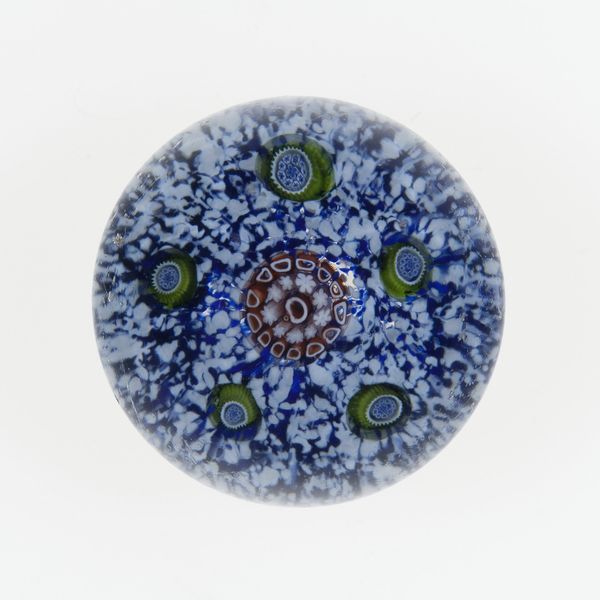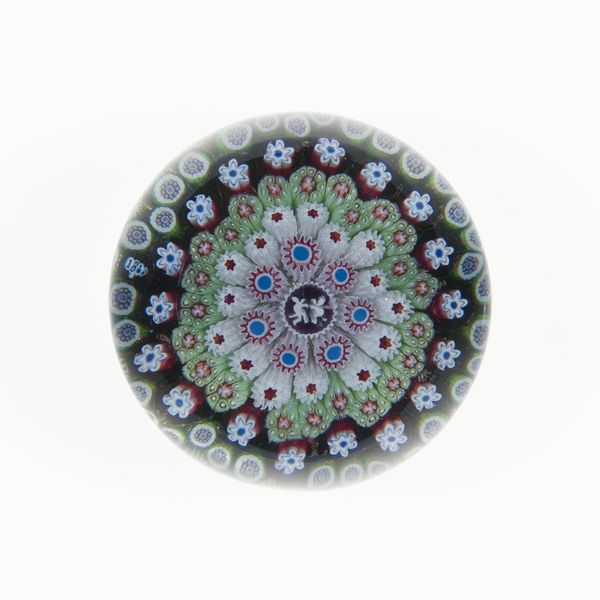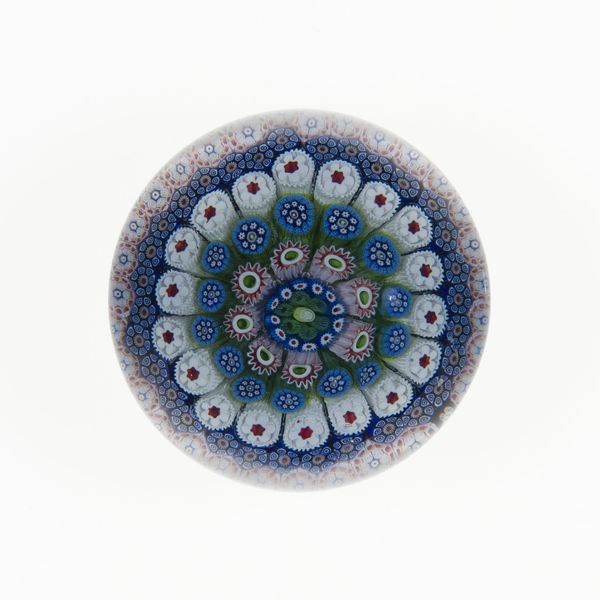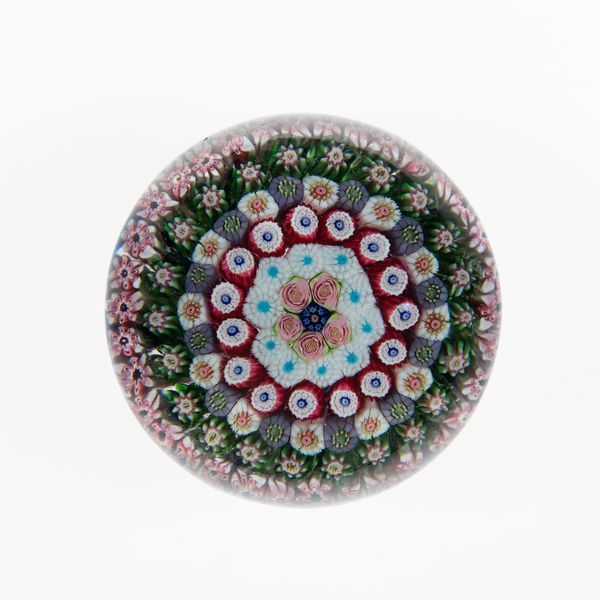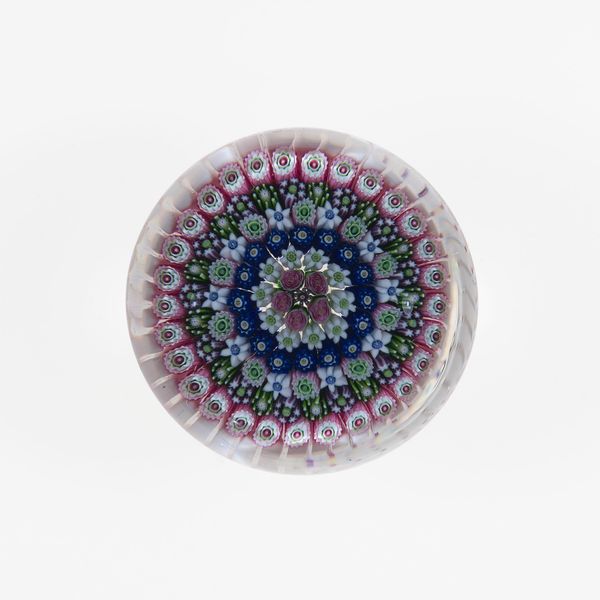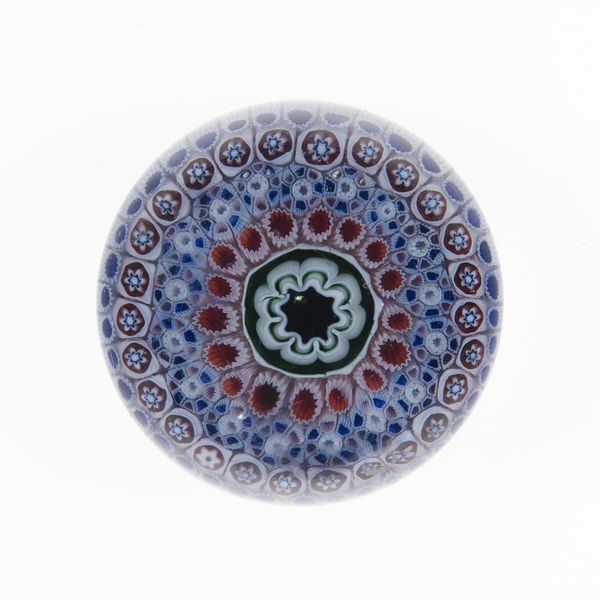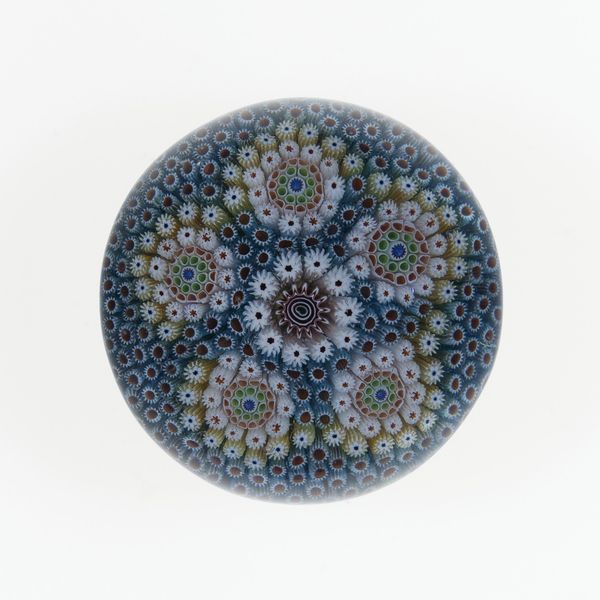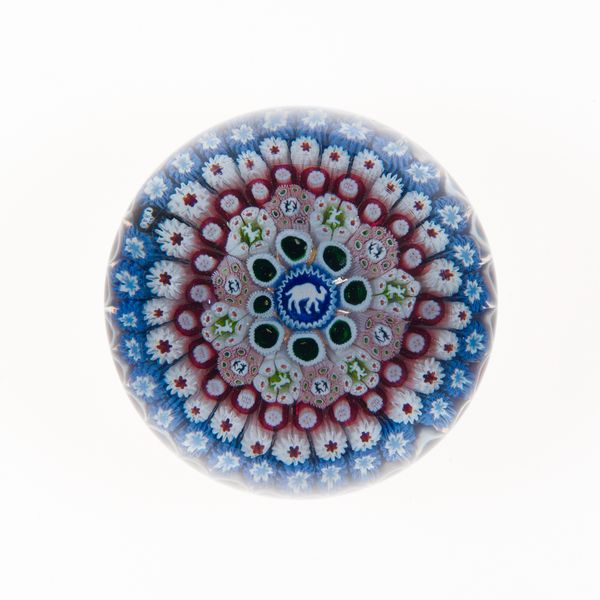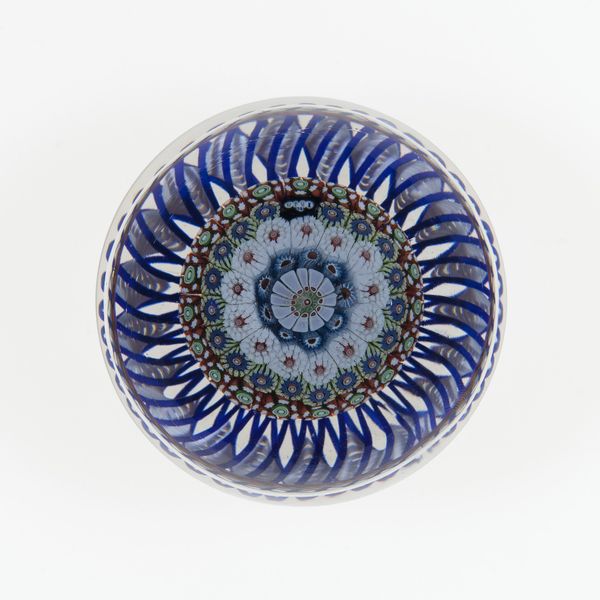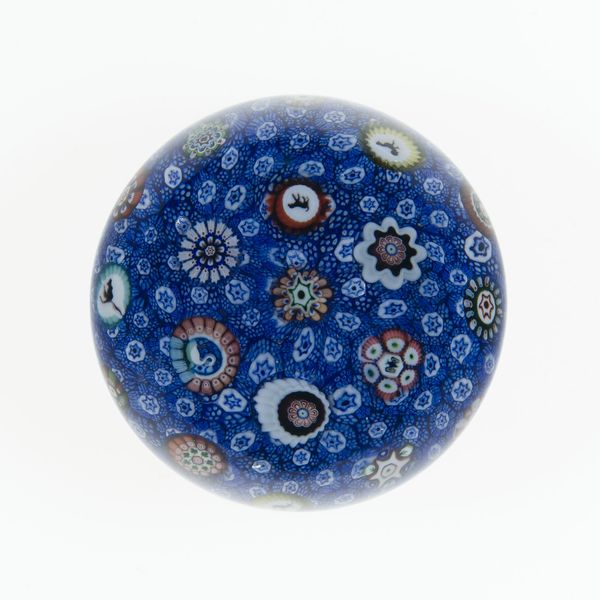
glass, sculpture
#
portrait
#
glass
#
sculpture
#
decorative-art
#
miniature
Dimensions: Diam. 7.4 cm (2 15/16 in.)
Copyright: Public Domain
Editor: This gorgeous little 'Paperweight,' created around the 19th century by the Compagnie de Saint Louis, is currently held at the Art Institute of Chicago. I’m immediately struck by its miniature scale and intricate detail. The tiny portrait in the center surrounded by all these glass florets…it's just mesmerizing! What kind of historical or cultural narrative do you think it carries? Curator: Well, these paperweights weren’t just desk accessories; they speak volumes about the democratization of luxury in the 19th century. Before mass production, only the elite could afford intricate glasswork. Factories like Compagnie de Saint Louis, by serializing design and technique, made such beauty accessible to a broader public. Editor: That makes sense. So it’s less about unique artistic vision and more about...access? Curator: Precisely! It’s decorative art operating within an industrial context. Think about the cameo in the center. Whose image is it? Is it a monarch? Is it an important mythological figure? It may give us insight into the social aspirations and popular culture of the time, perhaps emulating aristocratic aesthetics on a smaller, domestic scale. And the ‘portrait’ of someone important gave rise to mass media of political views, even in such objects. Editor: So, we’re looking at a confluence of industry, art, and even social commentary? A small revolution, so to speak, encapsulated in glass! Curator: Absolutely. The production and consumption of these objects mirrored broader social and political shifts, reflecting changing class structures and access to both beauty and imagery. Editor: That's fascinating. I never thought I'd find so much cultural history trapped in a paperweight. Curator: The beauty of art lies in these hidden narratives, waiting to be discovered through historical analysis.
Comments
No comments
Be the first to comment and join the conversation on the ultimate creative platform.

